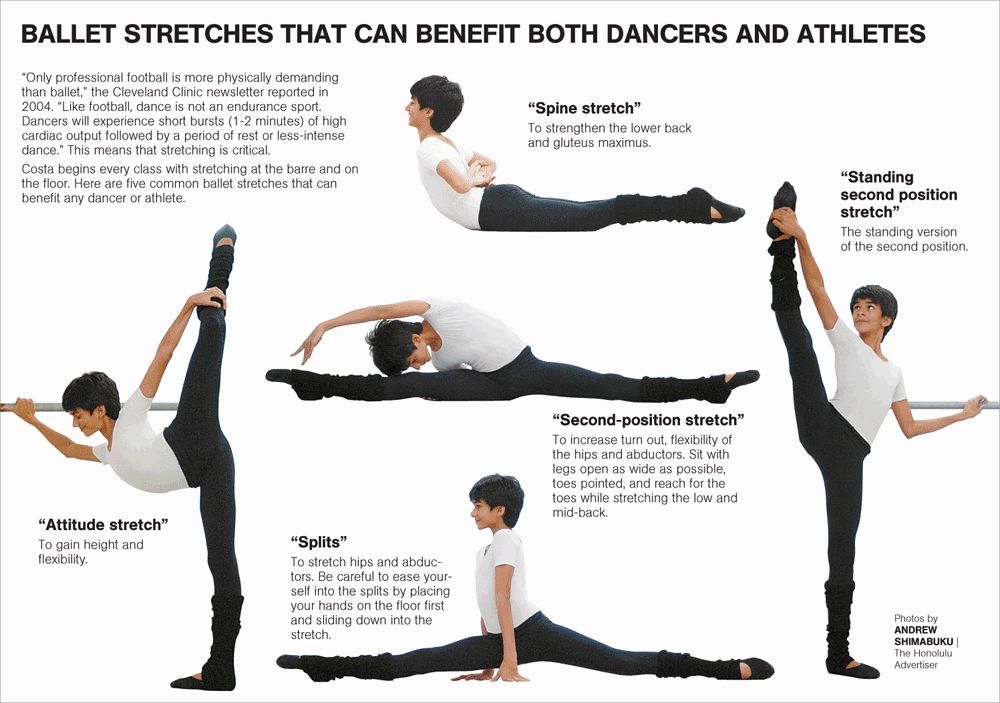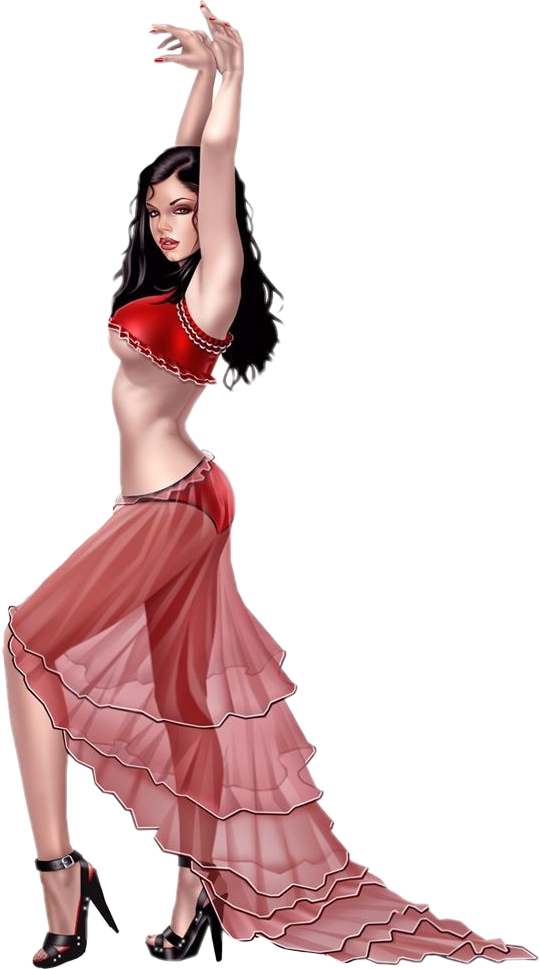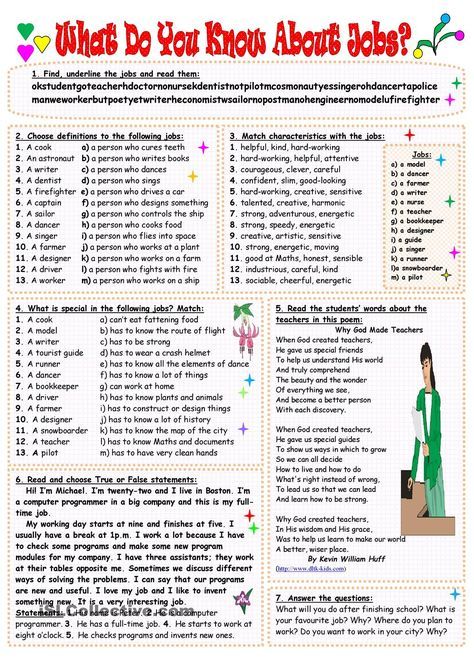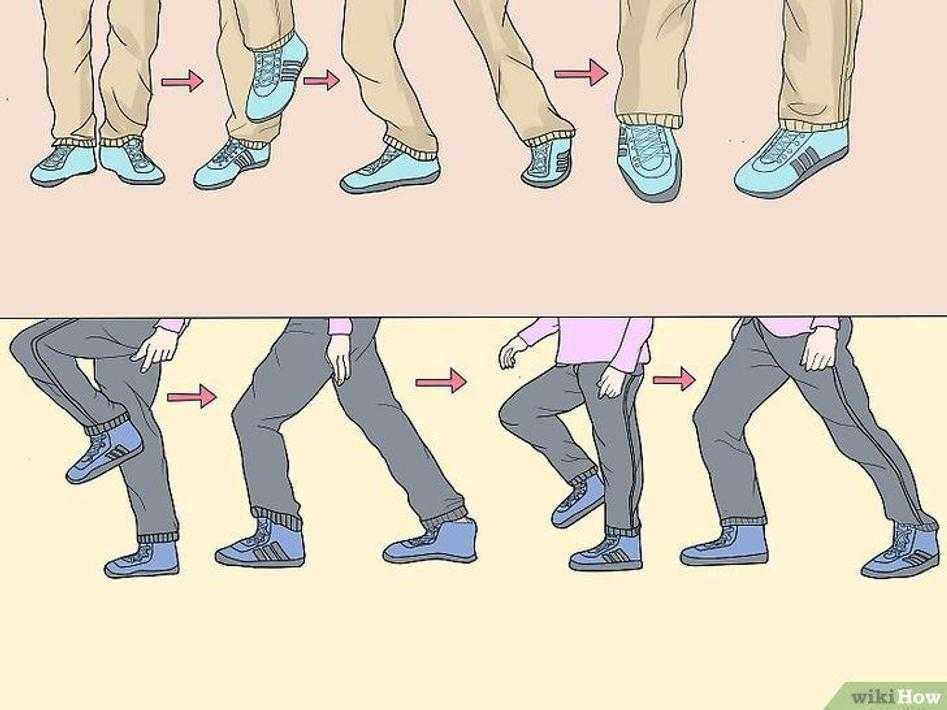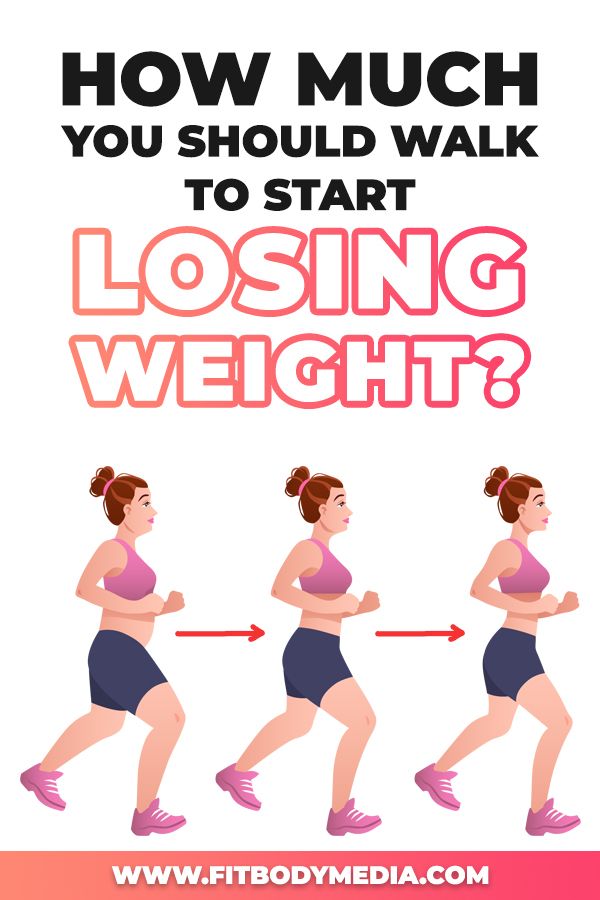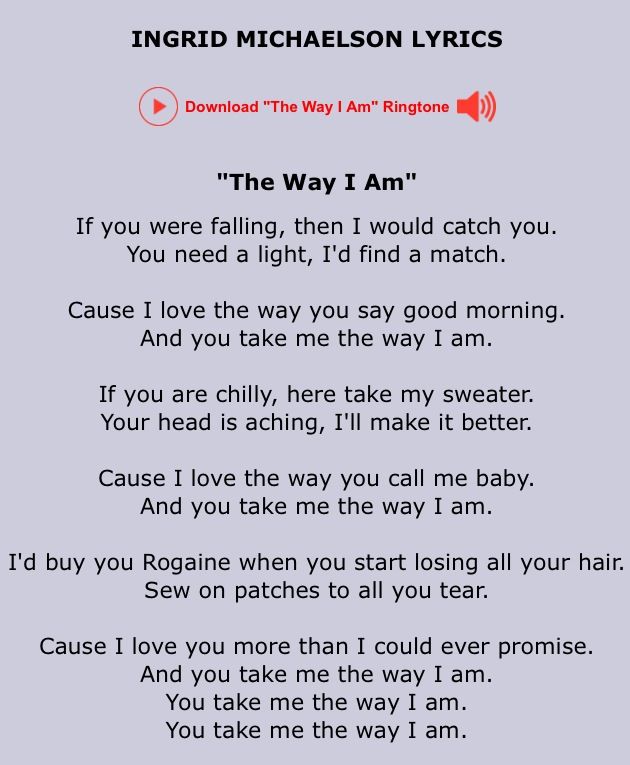How to dance on the floor
How to Dance at a Club or Party
You probably know people who can dance at a club without a second thought.
They just go out, have a few drinks, get down on the dance floor, and have a great night.
Meanwhile, you're seized by panic and insecurity just thinking about dancing at a club.
And whenever you do drag yourself out, you stay glued to the wall and watch everyone else let loose on the dance floor.
But guess what? Those awkward feels are completely normal. And we PROMISE you can overcome them!
Follow these 5 simple steps and never worry about feeling left out again.
1. Find the beat/rhythm as you make your way towards the dance floor
Don't expect yourself to bust out a Step Up routine out of nowhere as soon as you step foot on the dance floor.
This isn't a movie! Start small – really small – by just bobbing your head to the beat.
Do this before you even get on the dance floor. Think of it this way: Music is the one thing that lubricates the whole experience of being at the club.
It sets the mood as soon as you walk in until the moment you walk out. You have to be comfortable with the music first.
So start interacting with the music right away. You can listen and nod your head a you're holding your drink, hanging with a friend, or even sitting down.
This is an easy way to set yourself up for success on the dance floor before you even start dancing.
Your body will already have a handle on the rhythm, so you're more likely to stay on beat by the time you do get your feet steppin'.
Watch this video to learn how to find and count beats in music:
2. Start with a small bounce / groove
Once you're on, or around, the dance floor, start bouncing with your whole body.
Think of this bounce as a bigger version of your head bob. You're still moving to that same rhythm, but now with your knees, core, and chest.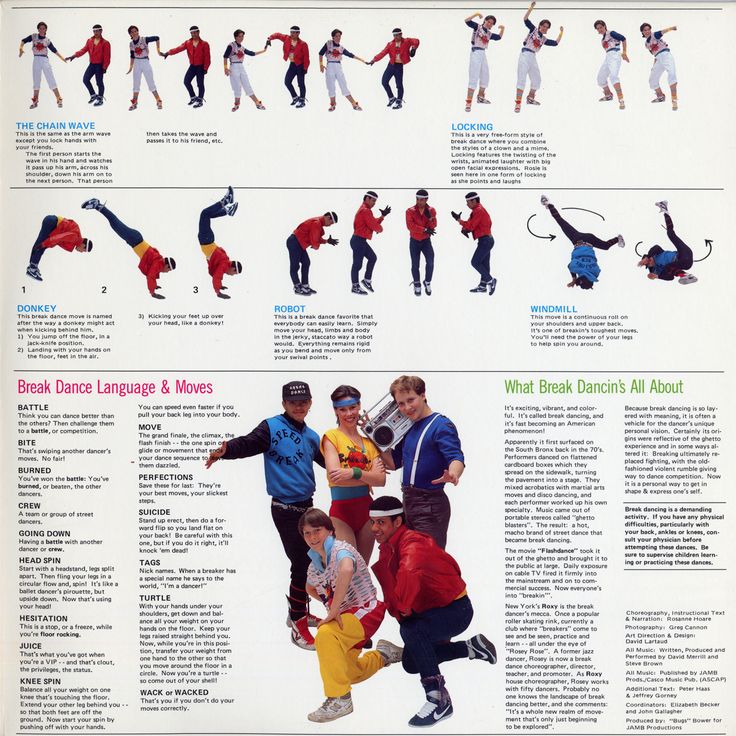
You know how a baby bounces on his knees when he hears a song he likes? Like that, but not as jolt-y.
Ease into those bounces calmly, then slowly build up your energy. This helps make your dancing look more natural.
Carlo Darang describes what a bounce / groove is in this video:
3. Learn simple steps
Got a handle on the music? Great.
Started bouncing with your body? Check. Now, let's get your feet moving!
But wait – you won't know which foot to step where without any practice.
So learn a few basic dance steps before you go to dance at a club.
This video will teach you how to do 3 basic dance moves that work with any song:
Wanna learn more basic party moves like these?
Check out Bianca's "Intro to Dance" program on STEEZY Studio! It'll teach you everything you need to know to get down on the dance floor.
Click here to take the first 4 classes for free.
4. Let loose
Now that you've got the basics of dance down, it's time to put on a few finishing touches to make sure you look comfortable and confident with every move.
These quick tips will help you refine your dancing so you look more loose, groovy, and comfortable:
5. Join the party
By this point, you've got a handle on dancing 1. on beat 2. with your whole body 3. using steps.
But you didn't come to dance at a club to do all this alone!
Once you have that base, dance with the people around you.
If you're in a crowd or a group of friends, then you can play off of their movements and energy.
Mimic the moves your friends are doing, lip sync with them, rap Nicki's entire verse in Motor Sport from memory.
And if the DJ or song lyrics tell you to do something (like put your hands up or jump), then do it!
These are little things you can't predict or practice – remember that you're out to have fun, not to play DDR in your head.
Grinding (or whatever you call it) on someone is its own topic – but whether you're dancing with one person or a whole group of people, the most important thing to do is to... Stay in rhythm!
You and your partner or friends could be doing totally different things. They could be jumping while you're pumping your arms.
She could be swaying side to side as you're 2-stepping.
But as long as you're moving to the same beat, it'll still feel like you're dancing together.
(The closer you physically get, though, the more similar you want your movements to be so that you don't end up hitting each other or creating friction between your moves. Dance with them!)
---
I hope these tips help you kiss those insecurities goodbye!
Follow these 5 steps and you'll realize that it's possible, and actually quite easy, to dance at a club.
You just need the right resources, some practice, and a dash of confidence. ;)
Have fun!
How to Use the Floor More Efficiently—In Any Style
“Using the floor” means different things to different dancers. Ballet students are often encouraged to push or pull away from the floor, and modern and contemporary dancers tend to embrace it as a friend. Percussive dancers dig into it, scrape it, brush it and more. Whatever your relationship to the floor, “you can learn to use it effortlessly, to help your body move more efficiently,” says Kathleen Bower, director of dance medicine at Miami City Ballet.
Ballet students are often encouraged to push or pull away from the floor, and modern and contemporary dancers tend to embrace it as a friend. Percussive dancers dig into it, scrape it, brush it and more. Whatever your relationship to the floor, “you can learn to use it effortlessly, to help your body move more efficiently,” says Kathleen Bower, director of dance medicine at Miami City Ballet.
Feet First
A dancer’s relationship to the floor usually begins with the feet: how you stand before you start to move. “Feel
that your feet are very connected to the earth,” says David
Zambrano, inventor of the Flying Low technique.
Charla Genn, a ballet teacher and dance rehabilitation specialist in New York City, encourages dancers to allow their feet to spread out on the floor, “like a duck.” A clenched foot is immobilizing, and leads to gripped ankles and hips. “Using the floor,” says Genn, “means that your joints are relaxed, so you can use your muscles. ”
”
Go With Gravity
In his choreography, Zambrano harnesses the velocity of
the descent. “We can use it consciously, the free-fall energy,”
he says. “Instead of dropping on top of the floor, you choose which pathway you want to exit.” When transitioning from standing movement to floorwork, he recommends beginning to “fall” as if you were going to sit down. Then, rather than merely sitting, dive forward or off to one side, or roll through your back. This way the movement won’t stop at the floor’s surface, but instead maintains continuity.
“When gravity is pulling you down, you tend to be using the eccentric, or lengthening, contraction of the muscles,” Bower explains. “Think of it as your natural braking system.” Dancers preparing for a particular piece or a new kind of floorwork should seek out exercises, like squats, that strengthen eccentric control.
Anja Hitzenberger, courtesy ZambranoDon’t Push It
You don’t need to press down to go up in a relevé or a jump. “Every action has an opposite reaction,” says Genn, “so, yes, if we’re going up, something has to go down.” But she thinks of that downward reaction as a light electrical impulse. “It’s just energy, not a physical push.” Before jumps, resist the urge to plunge into an oversized plié. This pulls your spine out of alignment, which makes it harder to get off the floor.
“Every action has an opposite reaction,” says Genn, “so, yes, if we’re going up, something has to go down.” But she thinks of that downward reaction as a light electrical impulse. “It’s just energy, not a physical push.” Before jumps, resist the urge to plunge into an oversized plié. This pulls your spine out of alignment, which makes it harder to get off the floor.
Bower explains that when you push down against the floor to jump, it actually keeps the center of mass of your body low. Instead, try thinking of the floor as a spring or a trampoline: Just bounce lightly off of it. “Then you have that powerful glute-max/hamstring connection, you get the full extension through the hip, and you should actually see that your jumps are higher,” says Bower.
Nan Melville, courtesy GennStay Soft
Most dancers experienced in floorwork will tell you that, at first, it hurts the bones. Knees, shoulders and vertebrae get bruised. Zambrano recommends imagining your bones are rubber, and thinking of your movement as a spiral going continuously into and out of the earth, rather than on or against the floor. “You learn that it is possible to transform your energy into something softer,” he says. “And when that happens, all your joints say, ‘Yes, why not?’ ”
“You learn that it is possible to transform your energy into something softer,” he says. “And when that happens, all your joints say, ‘Yes, why not?’ ”
When doing floorwork, Bower advises watching the choreographer for movement quality rather than shapes and positions. Try dropping your “full-out” to 75 percent. Dancers trained to always give their all and bracing themselves for contact with the floor may find this a difficult concept. But in Bower’s experience, this tactic helps the body ease into a new sequence, and into the floor. “You can work back up to full-out, but you want to maintain that ease of movement.”
As for those bruises, Bower suggests gentle massage if it’s not too painful, and arnica gel or Voltaren.
Prepare Your Body
To help dancers condition for floorwork, physical therapist Kathleen Bower begins with a few exercises focusing on their hips, to target the posterior chain and strengthen the eccentric control of the glutes and hamstrings:
Hip Hinges:
These are like demi-pliés with your feet in parallel, except instead of moving the knees forward as they bend, send your pelvis back. Focus on keeping your lower legs perpendicular to the floor.
Focus on keeping your lower legs perpendicular to the floor.
Dance Squats:
Increase the range of motion of the hip hinge, allowing the upper body and arms to move forward as a counterbalance.
Curtsy Squats:
Crossing one leg behind the other in parallel, “curtsy” all the way down to the floor, keeping the front foot flat, and then press back up to standing.
For the feet, Bower has an exercise series that she calls “toe yoga”:
• Sitting with feet flat on the floor, about one inch apart and parallel, try to lift your four outer toes, keeping the big toes on the floor. Then do the opposite, lifting only the big toes.
• Try to pull your big toes together. Then, keeping them together, attempt to lift them up.
• Lift all your toes, spread them out, and then relax them back to the floor, trying to keep space between each toe.
Teachers: For tips on how to help your students use the floor, visit dance-teacher. com.
com.
How to learn to dance twerk - Lifehacker
November 21, 2020 Likbez Sports and fitness
Butt size doesn't matter!
Iya Zorina
Author of Lifehacker, athlete, CCM
Twerk is just a super sexy dance that will pump your plasticity, and at the same time load your abs and back muscles well. To begin with, we will learn a few basic movements, and then we will diversify the dance vocabulary and analyze the main mistakes. And at the end you will find a bonus in the form of a playlist with suitable music. nine0003
If you have problems with your lumbar spine, exercise with caution, or better yet, consult your doctor.
Learn how to do basic elements
Booty pop back
Stand with your feet wider than shoulder width, toes slightly apart. Bend your knees and place your hands on your hips, turning them inward with your fingers, bend your lower back.
From this position, twist the pelvis down, and then, due to the deflection in the lower back, return it to its original position. Imagine that you are trying to reach the top of your head with your pelvis. nine0003
It is important to fix the upper back and work only on the lower back. You can not strain the gluteal muscles, otherwise the movement will turn out to be clamped.
If difficulties arise, try the lead-in exercise first. Place your hands on your hips so that your middle fingers rest on the protruding bones of the pelvis in front, and your thumbs - behind, closer to the sacrum. Bend your knees, move your pelvis down and then up, controlling the movement with your hands.
When you feel more confident, remove your hands and connect the movement with your knees. When the pelvis goes down, the knees bend, when it rises, they unbend. No need to lock the knees at the extreme point, they should remain slightly bent. nine0003
The pelvis moves back not only due to the straightening of the knees.
The lower back must work.
Front booty pop
This movement is very similar to the previous one, only the emphasis is on pushing the pelvis forward rather than backward.
Set your feet wide and point your toes slightly out. You can put your hands on your hips to better feel the tilt. At the same time, bend your knees and sharply move your pelvis forward so that your butt goes down, and then bend your lower back and bring your pelvis back. nine0003
The emphasis is on the first phase of the movement, when the butt goes down. It is important at this moment not to pinch the buttocks, but to change the position of the pelvis due to the tension of the abdominal muscles.
Try other twerk moves
Double
This element repeats the usual booty pop, only the movement of the pelvis in it is double: down-down, up-up.
Suffle twerk
Stand with your feet wider than shoulder width. At the same time, turn one leg with your toe and knee out and transfer your weight to the opposite thigh.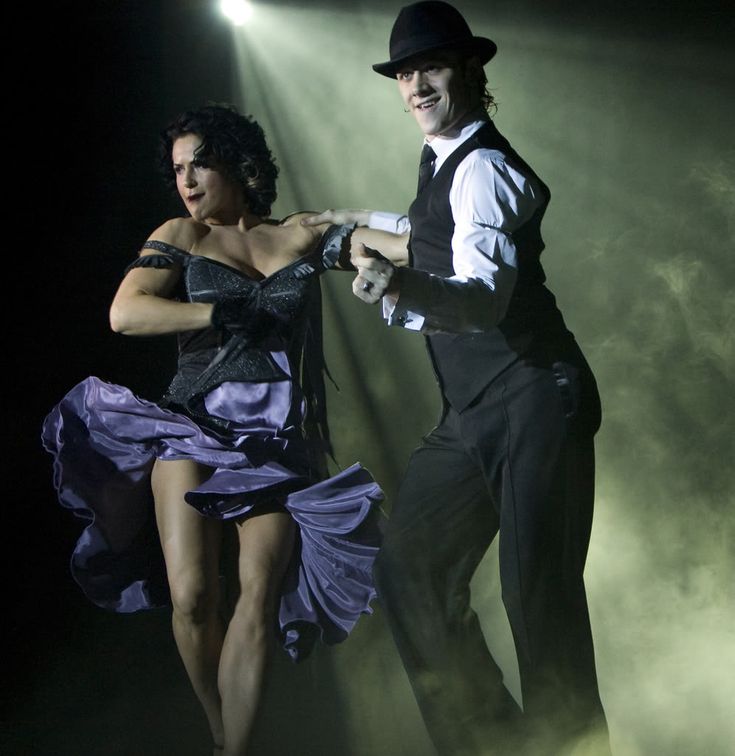 Then, with a small jump, switch sides. nine0003
Then, with a small jump, switch sides. nine0003
First try to move slowly to get the point, then speed up. Jump relaxed.
Up down twerk
Arch your lower back and push your pelvis back. On the count of “one”, simultaneously round the lower back, bringing the pelvis forward, bend the knees and bring the shoulders forward. On the count of "two", bend your lower back and take your ass back in a semi-squat.
On the count of three, straighten your knees, round your lower back, and roll your shoulders forward. On the count of four, arch your back in the thoracic region, straightening your shoulders. nine0035
It turns out that at the lower point you bend in the lower back, and at the top - in the chest.
Wobble
To feel the movement, start moving slowly. Place your feet shoulder-width apart, place your palms opposite the pelvis. In turn, touch the palms with one or the other bone of the pelvis. Accelerate gradually.
You can wobble while standing upright or bent over. Practice slowly bending over and back up as you move. Important: you should not pinch, otherwise stiffness will occur and no shaking will work. nine0003
Zig zag
Get into a twerk stance, lower your right thigh first, then your left thigh. Then, one by one, lift them up to their original position. At first, perform the elements slowly, with fixation at each point, and then gradually accelerate.
You can do this movement a little higher. In this case, start with a stance on straight legs in an incline. In the same way, lower the right and left hips in turn, bending the knees, and then raise the hips, straightening the legs. nine0003
Stripper shake
Rise up on your toes and turn your heels in and out a little. Arch your lower back, try to relax your hips as much as possible.
This element can be performed in a straight position or bent over, moving both legs at once, or one at a time.
Roll
Stand with your feet slightly wider than your shoulders, point your toes forward, tilt your body and rest your hands on your hips. Rotate your pelvis, lowering and raising it as you go. nine0003
Rotate your pelvis, lowering and raising it as you go. nine0003
You can do this either in a bent over position on your hips or standing up.
Happy twerk
Start in a twerk position with your toes pointing forward. Do one regular booty pop in place, then another with the toes and knees turned out to the sides, and then the next one with them returning to a straight position.
Continue turning your toes and knees out and back, tilting your pelvis as you move.
Flash
Place your feet shoulder-width apart, rise on your toes. Pull your pelvis back a little. Move quickly from foot to foot, trying to relax your buttocks. nine0003
Twist
Raise your right leg to the side, turn it with your toe and knee inward. From this position, simultaneously transfer the weight to the left thigh and turn the raised leg with the toe outward. Return your foot to the floor and repeat on the other side.
Try moving in other positions
Twerk can be danced not only while standing, but also while squatting, on all fours and even upside down on your hands, with your feet resting against the wall. Try different positions - this will help diversify your dance. nine0003
Squatting
This is the same booty pop, only squatting. If you don't have enough stretch to move freely in a deep squat, work on your hip mobility first.
Offset to one side
Good stretch is also required for this option. Otherwise, you will not be able to relax and move freely.
On all fours
First practice the standing element to get used to it. Raise one leg on the toe, turning it with the knee outward and at the same time leaning on the opposite thigh. Then smoothly switch sides. nine0035
Now place your palms on the floor, arch your lower back, bend your knees and lift your heels off the floor. Perform a familiar movement in a new position.
This is enough to get you started. Try, combine the movements with each other and, if something fails, correct the mistakes.
Understand why you don't succeed
There are three main reasons why instead of twerking you get some bullshit.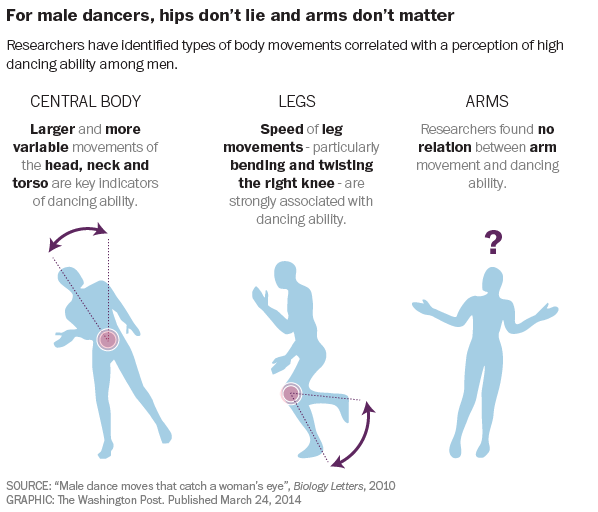 And the size of the priests has nothing to do with it.
And the size of the priests has nothing to do with it.
1. You lack flexibility
To twerk well, you must have good mobility in the lumbar spine and hips. If flexibility is lacking, you can improve it by doing stretching exercises.
Choose stretching exercises 🤸🏻♀️
- 50 exercises to stretch the muscles of the whole body
2. You work your upper back and shoulders
All basic movements require arching in the lower back. It is due to the lower spine that you feed the pelvis back and forth. But if during booty pop you bend in the thoracic spine and connect your shoulders, the movement will not look like a twerk.
3. You're too tight
This is probably the biggest beginner's mistake, which results in a tight, wooden pelvic movement instead of sexual shaking.
Don't push yourself too hard, relax your buttocks and thighs, shake off tension from your arms and shoulders. All elements should be carried out easily and without clamps. The best way to relax and feel the movement is to turn on the music.
Pick up the music
We found a cool audio compilation that makes you want to dance to and not stop. The description on YouTube has the names of all the tracks.
And another big selection, this time from Yandex.Music. There are some great tracks too, and some of them are pretty slow paced so you can learn the moves in a relaxed and casual way. nine0003
Let us know how your twerking progresses in the comments. It turns out?
Read also 💃👍🤸♀️
- Dancing as a sport: choosing the right direction
- How to learn to dance: video lessons for those who are not afraid to try
- How to learn how to dance the shuffle
- How to learn street dancing without leaving home
- Dancing on a treadmill
*Activities of Meta Platforms Inc. and its social networks Facebook and Instagram are prohibited in the territory of the Russian Federation.
and its social networks Facebook and Instagram are prohibited in the territory of the Russian Federation.
How to learn how to break dance at home. How to learn how to dance break dance at home
The name "break dance" is not quite right, it is correct to call this style breaking or b-boying. How can you describe this style? This is culture, art, rotations, extreme movements, as well as the direction of hip-hop. It was first danced on the New York streets in the 70s. Breaking used to be the dance of the Underground culture, or rather the underground. Later, Puerto Ricans added capoeira elements that looked like (screw, somersault). How is breakdancing at home? nine0003
Breaking music
Have you set yourself the task: “I want to learn how to break dance”? Then pick up the music first. For this, accelerated remixes of hip-hop tracks are suitable, as well as break-beat music, for example, Funkshone, Dj Skeme Richards, Big Daddy Moochin, Ill Boogs and others.
How to learn how to breakdance at home: basic movements
1. Strike. Sit on the floor, one leg is bent at the knee and on the toe, the other needs to be pulled forward, the toe looks up. Next, we take the extended leg to the side, cut the second one and return it to its original position without bending. nine0003
2. Balance. Learn to balance. Take a position as for push-ups on the floor, lean on one hand and try, balancing, to stay on it. The right elbow should be brought to the stomach, transfer the weight to this hand without losing balance.
3. Tumbler. You need to fall on your back, somersault back and lift the body on your hands, then fall again and so on.
4. Swipe. You need to stand on one hand, the body is parallel to the floor, does not sag and is turned to the side, raise the other hand to the ceiling. You can first change your hand and at the same time turn the body in the opposite direction. Together with the replacement of hands, you need to perform a jump from both legs. nine0003
nine0003
5. Footwork. These are leg movements. These include weaves, paths, rhythmic footsteps around the body, running.
6. Spinning move or power move. These are elements of rotation that amaze with their spectacularity. For example, "crab" - the body rotates horizontally on the arms, and the legs are spread apart into a twine.
7. Power Trix. Power movements that are unthinkable without appropriate physical training.
8. Friezes. These include fading in different positions. nine0003
How to learn how to breakdance at home? This, of course, is not too simple, but it is quite real. To perform breakdance lessons at home, use the tips that will help you in your endeavor:
All technical elements will require endurance from you, so learn endurance and patience - not everything works out the first or even the fifth time.
When performing acrobatics, get a friend or coach to back you up.
To avoid injury, be sure to warm up and cool down - warm up the muscles well. nine0003
nine0003
Be careful when performing movements, move from simple to complex gradually.
Conduct training in a team - it is easier to notice your own and other people's mistakes and avoid them in the future. In addition, this is a great incentive to dance better than others and learn how to perform the most inconceivable movements.
Now you know how to learn how to breakdance at home, and this is a great start, as dancing in this direction is a great replacement or addition to any sport. nine0003
One of the poorest areas of New York - the Bronx is considered to be the birthplace of break dance. It was there, in the sixties, that his story began. At that time, with the increased popularity of electronic music, elements of various rotations on the ground were very often used among young dancers, this direction was called Good Foot.
The dancers, one might say, “broke” the usual movements to the beat of the records, there were no rotations yet in the usual breakdance movements.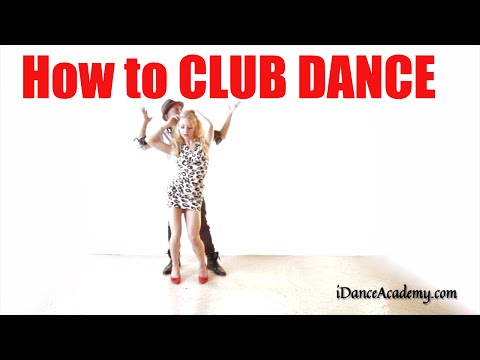 As the culture consolidated its position, the dancers were forced to stretch their imaginations even more for active opposition in dance battles. There was even a slogan saying that it is better to fight with the help of creativity, without resorting to weapons, and the youth fought, gathered in teams to defeat their opponent. That is why the teams developed their own individual style, which laid the foundation for the breakdance sub-styles. nine0003
As the culture consolidated its position, the dancers were forced to stretch their imaginations even more for active opposition in dance battles. There was even a slogan saying that it is better to fight with the help of creativity, without resorting to weapons, and the youth fought, gathered in teams to defeat their opponent. That is why the teams developed their own individual style, which laid the foundation for the breakdance sub-styles. nine0003
Such dances became so "accustomed" and became fashionable that after some time, in the seventies, the legendary rapper Afrika Bambaata proposed to hold competitions on a cardboard surface among New York dancers. And in 1977, a young Rock Steady Crew appeared, which made a very big contribution to the development of this direction. And already in the eighties, the team held a world tour, showing a new direction in dance to the whole world.
Break dance includes elements of previously unrelated martial arts and techniques, such as:
* Brazilian wrestling capoeira ;
* American Jazz;
* Korean kung fu;
* acrobatics;
* twist et al.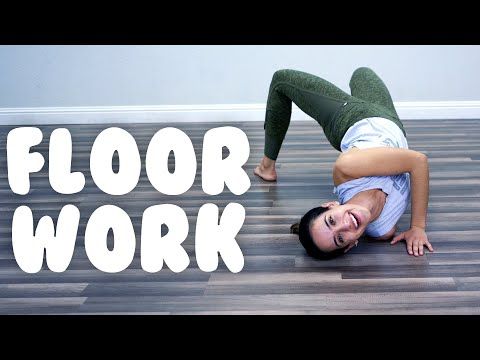
1970s-1980s, break dance culture becomes an integral part of hip hop.
At the very beginning of the eighties, breakdance spread throughout Europe, becoming as popular as it was at home. But there was no lack of information. On television, they told how to correctly perform certain elements of the dance, and in some educational institutions they even replaced physical education lessons with break dance lessons. By the end of the eighties, "break" became an independent direction in art. And it is art, not sports. At competitions, the score is not for the correct execution of movements, not for the observance of techniques, but for the self-expression of the performer, his sense of tact. nine0003
The film "Breakin"", released in 1985, made breakdance very popular in the USSR. The first production of dances of this style in the Soviet Union was organized by Alexei Kozlov, after which a real dance boom came. dance style.True, the so-called upper break or boogie first gained popularity.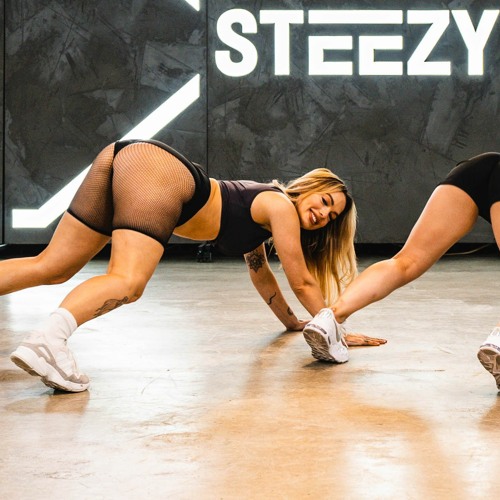 This is a type of movement where everything happens in a vertical position, the main elements are performed with the hands, but neither the hands nor the body itself come into contact with the floor once again.0003
This is a type of movement where everything happens in a vertical position, the main elements are performed with the hands, but neither the hands nor the body itself come into contact with the floor once again.0003
Top break dance can be divided into several styles:
* electric boogie (electricboogie) - plastic that imitates an electric discharge, including a variety of elements, such as sliding, ticking, waves, etc .;
* robot (robot) - the principle is the same as that of the electric boogie, but all movements are stylized as mechanical;
* king-tat (kingTut) - based on movements performed mainly by arms at an angle of 90 °, which is similar to ancient Egyptian dances;
* pop-locking (poplocking) - at the heart of this style are rhythmic swaying of the body, jumps, sharp movements with the hands of locking and poping. nine0003
1987, 1988, break dance gains popularity in the USSR, becomes a mass movement. However, the lack of information hindered the desired development.
1990-1991, during the collapse of the Soviet Union, when it became possible to receive information from the West, the dance direction began to be hampered by political and economic events.
However, it was in the early nineties in the USSR that the lower break dance or, as it is also called, breaking, became widespread. In this variant, most of the movements and techniques are performed on the floor and acquire power performance. nine0003
The lower break, like the upper one, can be distinguished by styles:
* style (style) - begins with solo improvisation, and then is complemented by running, footwork in headstands;
* power tricks (powertricks) - a combination of tricks, friezes, e-twist, knee jumps, etc.;
* power move (powermove) - this is already the most spectacular and complex style, consisting of elements such as a helicopter ("helik"), consisting of rotations with legs, standing on a support from hands and head, a windmill ("windmill") - the same as the helicopter in fact, headspin (“head”) - consists in rotation on the head, backspin - rotation on the back.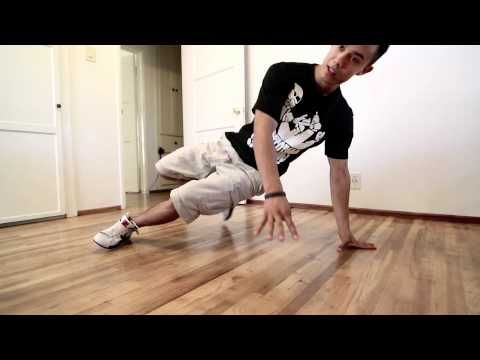 Also in this style there are jumps on hands, sweeps, machmills (“barrel”), tartle, etc.
Also in this style there are jumps on hands, sweeps, machmills (“barrel”), tartle, etc.
Nowadays, break dance is widely popular all over the world, but the USA and the East (Japan, Korea) are the biggest admirers of this culture. In Europe, he is also known, although to a lesser extent, but it is in Germany that the world championship in breakdance takes place - The Battle of the Year.
Since 2004, another international competition has been held - Red Bull BC One, which in 2011. took place in Moscow. Competitions are held on a specially equipped round stage, surrounded by cameras that film the entire performance from all possible angles. nine0003
And now, walking along the street past the guys dancing break dance, it's hard to look away. In this dance, it is impossible to predict in advance what will happen next, what movements will be used. Breakdance attracts with its unpredictability and eccentricity. The spirit is also captured by the tricks themselves, which are very difficult to perform.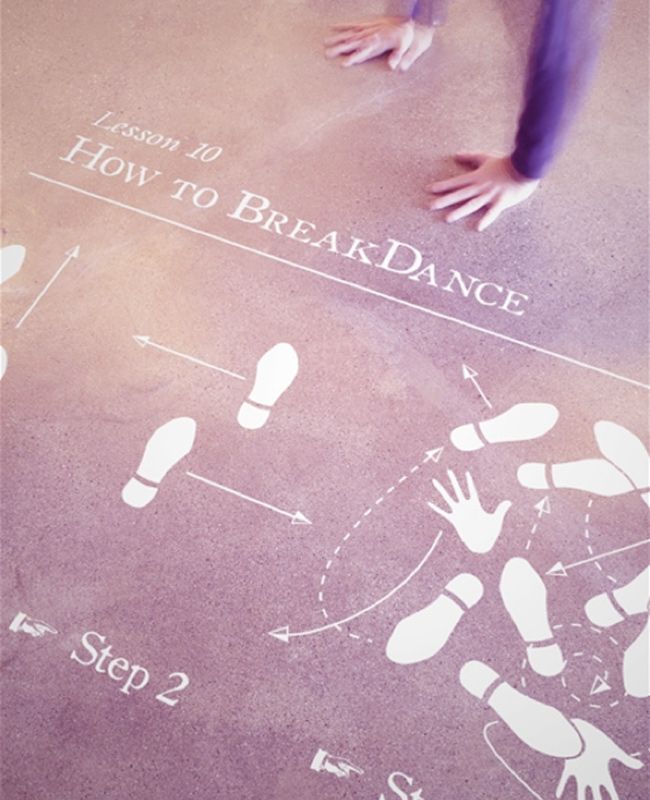 To achieve such results, you need considerable ingenuity, willpower and physical fitness. This allows, while doing break dance, to strengthen muscles, correct the figure and get a lot of pleasure not only from the process itself, but, of course, the result - the admiring glances of the audience. nine0003
To achieve such results, you need considerable ingenuity, willpower and physical fitness. This allows, while doing break dance, to strengthen muscles, correct the figure and get a lot of pleasure not only from the process itself, but, of course, the result - the admiring glances of the audience. nine0003
Break dance is a spectacular street dance that came to us from New York in the 60s. In Russia, this direction includes 2 different concepts: the upper break dance and the lower break dance.
Break dancers are in excellent physical shape, as the execution of complex acrobatic movements requires special training. B-boys (as dancers call themselves) develop the strength and flexibility of the body, a sense of balance and endurance.
Origin story
The history of breakdancing began in the late 60s in New York, in one of the poorest areas - the Bronx. At this time, electronic music was gaining popularity among young dancers who used the elements of rotation on the ground and called this direction Good Foot.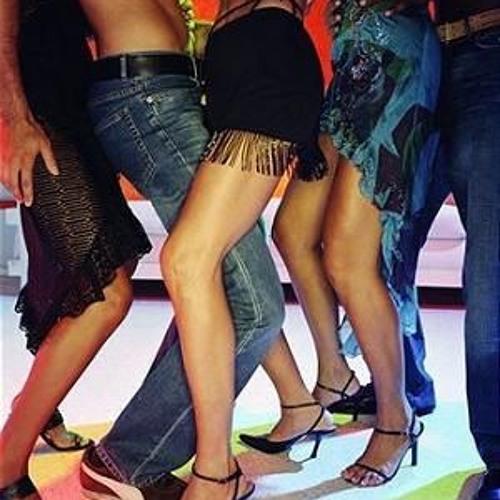 The name B-boys and B-boying appeared thanks to the DJ Kool Herc, B-boys - an abbreviated name for Break boys - broken beat dancers.
The name B-boys and B-boying appeared thanks to the DJ Kool Herc, B-boys - an abbreviated name for Break boys - broken beat dancers.
Basic choreography / dance technique0003
Flare
Flare is the rotation of the legs in a circle, alternately changing hands.
Gelik / Windmill
Rotation on the floor with legs wide apart due to leg swings. There are varieties in setting the position of the hands behind the back - this is one of the basic movements.
Headspin
Headspin - rotation on the head with hands. The position of the legs can be with the legs apart and bent into an obtuse or right angle. One of the brightest movements want to learn breakdance beginners. nine0003
Candle / Ninety Nine
Rotation of the body on a straight arm.
Candle / TWo thousand
Rotation of the body on two hands.
Swipe
Rotation of the body 180 degrees and repulsion from the floor with a change of supporting hand.
Turtle
Horizontal rotation of the body on bent arms, which rest with the elbow on the press.
Air Flare
A 180 degree rotation of the body in which the legs constantly make circles in the air. nine0003
Cricket
Horizontal rotation of the body on bent arms, but only one arm acts as the center of gravity, the second is the guide.
Six steps
Six leg movements with the arms as support. It looks like a circular run with your feet on the floor.
All of these moves you can learn from our
Breakdancing originated around the 1970s, but it continues to evolve and be one of the most popular forms of modern dance movement. What is a unique dance style that was born on the streets of New York. nine0003
What is break dancing?
Many people, including established professional dancers, often view breakdancing as a form of dance that peaked in the 1980s and is now dead. However, this is very far from the truth. Breakdancing actually originated 20 years before its heyday in popularity - in the early 1970s, this type of dance was popular with young African Americans and other ethnic minorities in the Bronx. Children began to bring their radios to the streets and try different dance moves. These dancers became known as "breakers" because of the association with starting the dance after turning on the radio. nine0003
However, this is very far from the truth. Breakdancing actually originated 20 years before its heyday in popularity - in the early 1970s, this type of dance was popular with young African Americans and other ethnic minorities in the Bronx. Children began to bring their radios to the streets and try different dance moves. These dancers became known as "breakers" because of the association with starting the dance after turning on the radio. nine0003
The evolution of dance in society
Quite quickly, break dancing caught the attention of more experienced dance professionals, and it soon became popular throughout the United States. The dance often took place on the street, was used to peacefully resolve disputes by warring gangs, and soon these informal competitions turned into more organized events. Soon, dance groups began performing breakdancing at big events and discos. Today, there are worldwide competitions dedicated specifically to break dancing, and many dance studios offer break dancing lessons. Often the steps of this dance are taught in conjunction with more modern hip hop. Breakdancing is now an international phenomenon and is popular in every corner of the globe. nine0003
Often the steps of this dance are taught in conjunction with more modern hip hop. Breakdancing is now an international phenomenon and is popular in every corner of the globe. nine0003
Breakdancing Movements
Breakdancing has four unique movements - Power Elements, Freezes, Toprock and Footwork. Each of these has its own function in the overall breakdancing choreography, and the dance essentially consists of a combination of these four types of movements.
Toprock is a series of movements performed in a standing position. This series of moves requires good flexibility and a sense of rhythm, and many dancers use Toprock as an introduction to a series of dance tricks. nine0003
Footwork is the exact opposite - it is done mostly on the floor.
Power movements - rotational elements that can be used in any phase of the dance.
Friezes - freezing for a couple of seconds in one position after the end of any set of movements.
